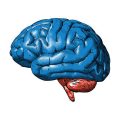Introduction to Osteoporosis in the Elderly
Osteoporosis is a significant public health concern among the elderly in Britain, with an estimated three million people living with the condition across the UK. This silent disease, characterised by decreased bone density and increased fragility, predominantly affects older adults, especially post-menopausal women. The prevalence of osteoporosis increases with age, placing the elderly population at heightened risk of fractures, particularly in the hip, spine, and wrist. These fractures can lead to serious consequences such as loss of independence, prolonged hospital stays, and even increased mortality rates.
In the British context, factors such as limited sunlight exposure contributing to vitamin D deficiency, sedentary lifestyles, dietary habits low in calcium, and a growing ageing population exacerbate the risk of developing osteoporosis. Genetics, certain medications, and underlying chronic illnesses further compound this risk. The impact of osteoporosis extends beyond individual health, imposing a substantial burden on the NHS and social care services due to long-term rehabilitation needs and associated healthcare costs. Recognising these challenges highlights the importance of early intervention and comprehensive management strategies tailored to the unique needs of Britain’s elderly population.
2. Understanding Physiotherapy in the UK Healthcare System
Physiotherapy holds a central position in the management of osteoporosis within the British healthcare landscape. In the United Kingdom, physiotherapists are regulated by the Health and Care Professions Council (HCPC) and adhere to rigorous standards set by both the NHS and professional bodies such as the Chartered Society of Physiotherapy (CSP). Their interventions extend across both public and private sectors, ensuring that elderly patients with osteoporosis receive evidence-based care tailored to their specific needs.
The Role of Physiotherapy within the NHS
Within the National Health Service (NHS), physiotherapy services for osteoporosis are typically accessed through GP referrals or multidisciplinary fracture liaison services. These pathways are structured to ensure early identification, risk assessment, and comprehensive rehabilitation for older adults at risk of fragility fractures. NHS physiotherapists collaborate closely with consultants, nurses, occupational therapists, and other allied health professionals to deliver integrated care plans.
Patient Pathways in NHS vs Private Sector
| Aspect | NHS | Private Healthcare |
|---|---|---|
| Access | GP or specialist referral required; may involve waiting lists | Direct access; typically faster appointments |
| Treatment Setting | Hospitals, community clinics, outpatient centres | Private clinics, home visits possible |
| Care Coordination | Multidisciplinary team approach within NHS framework | Physiotherapist-led; may coordinate externally if needed |
| Cost to Patient | No direct charge (funded by NHS) | Self-funded or covered by private insurance |
| Professional Standards | HCPC & CSP regulated, NHS clinical governance protocols | HCPC & CSP regulated, adherence to private clinic standards |
Professional Standards and Quality Assurance
Regardless of the setting, all practising physiotherapists must maintain registration with the HCPC and demonstrate ongoing competence through continuous professional development. The CSP provides additional guidance on best practice for managing osteoporosis, ensuring that British physiotherapists deliver safe, effective, and person-centred care. Regular audits and patient feedback mechanisms further underpin quality assurance across both NHS and private sectors.

3. Core Physiotherapy Interventions for Osteoporosis
Physiotherapy plays a pivotal role in managing osteoporosis among the elderly in Britain by utilising evidence-based interventions tailored to the specific needs of older adults. The most effective strategies include individually designed exercise programmes, balance training, and manual therapies, all of which are adapted to address age-related challenges and maximise safety.
Tailored Exercise Programmes
Exercise is universally recognised as an essential component in maintaining bone density and reducing fracture risk. In the UK, physiotherapists often design personalised exercise regimens that focus on weight-bearing and resistance activities suitable for the elderly. Examples include brisk walking, stair climbing, and light resistance training using bands or light weights. These exercises not only promote bone health but also improve muscle strength and joint flexibility, which are critical for overall mobility in this demographic.
Balance Training
The risk of falls is significantly heightened among older adults with osteoporosis. Physiotherapists commonly incorporate balance training into their interventions, employing techniques such as Tai Chi, static and dynamic standing exercises, and proprioceptive drills. These activities are evidence-based methods shown to enhance postural stability and confidence in movement, thereby reducing fall incidence—a key concern within British healthcare practice.
Manual Therapies
Manual therapies, including gentle mobilisation and soft tissue techniques, are sometimes used to alleviate pain and improve range of motion. While more research is needed to quantify their direct impact on bone density, these approaches can help manage secondary complications such as back pain or muscular stiffness, often seen in elderly patients with vertebral fractures due to osteoporosis.
Adaptation for Older Adults in Britain
Interventions must be carefully adapted to accommodate common comorbidities such as arthritis or cardiovascular disease prevalent among Britain’s ageing population. Physiotherapists prioritise gradual progression, close monitoring, and regular reassessment to ensure exercises remain safe and effective. Moreover, cultural considerations—such as incorporating community-based classes at local leisure centres—help foster social engagement while promoting adherence to physiotherapy routines across diverse British communities.
4. Prevention and Education Strategies
Preventive measures and patient education are fundamental aspects of physiotherapy in managing osteoporosis among the elderly in Britain. Physiotherapists adopt a proactive approach, focusing not only on treatment but also on empowering older adults to take charge of their bone health. This section explores how British physiotherapists integrate prevention, education, and self-management into their practice to reduce the incidence of osteoporosis-related complications.
Preventive Measures Delivered by Physiotherapists
Prevention is at the core of effective osteoporosis management. Physiotherapists collaborate with patients to implement evidence-based strategies tailored to individual needs and local context. Key preventive approaches include:
| Preventive Strategy | Description | Relevance to British Elders |
|---|---|---|
| Weight-bearing Exercise | Encouraging regular activities such as walking, stair climbing, or dancing to stimulate bone growth. | Adapted for safe participation in local community centres or leisure groups. |
| Balance & Strength Training | Designing programmes to improve muscle strength and coordination, reducing fall risk. | Incorporates familiar British sports and group classes offered by the NHS or local councils. |
| Lifestyle Modification Advice | Guidance on smoking cessation, alcohol moderation, and dietary improvements rich in calcium and vitamin D. | Advice based on UK dietary guidelines and cultural eating habits. |
| Home Safety Assessments | Reviewing living environments to minimise fall hazards. | Reflects typical British home layouts and seasonal risks (e.g., slippery pavements in winter). |
The Role of Patient Education
Physiotherapists play a crucial role in educating elderly patients about osteoporosis, demystifying misconceptions, and providing practical advice relevant to daily life in Britain. Education sessions may cover:
- The importance of bone health and early detection through DEXA scans available via the NHS.
- Safe exercise routines suitable for the British climate and public spaces.
- Nutritional guidance aligned with UK public health recommendations.
- How to recognise signs of bone fragility and when to seek professional support.
Supporting Self-Management: A Patient-Centred Approach
A central tenet of modern physiotherapy is fostering self-management skills among elderly patients. Through motivational interviewing, goal setting, and regular follow-ups, physiotherapists empower individuals to take responsibility for their own health outcomes. Tools such as exercise diaries, fall risk checklists, and personalised action plans are commonly used within the NHS framework.
Cultural Considerations in British Context
Effective prevention and education must resonate with the lived experience of older people in Britain. Physiotherapists often adapt their communication style to reflect regional dialects or incorporate locally relevant examples. They might collaborate with family members or carers—common in multi-generational British households—and signpost community resources like Age UK or Silver Line for ongoing support. By integrating these culturally sensitive practices, physiotherapists can maximise engagement and adherence among elderly patients across diverse British communities.
5. Barriers and Challenges in Implementation
The effective delivery of physiotherapy for osteoporosis management among the elderly in Britain is confronted by a range of barriers and challenges. Understanding these factors is crucial for developing more equitable and effective interventions tailored to the British context.
Resource Limitations in the NHS
One of the most significant challenges is the limitation of resources within the National Health Service (NHS). Due to increasing demand and constrained budgets, access to specialised physiotherapy services can be delayed or insufficient. Waiting times for referrals are often lengthy, which may hinder timely intervention and reduce the effectiveness of preventative strategies aimed at reducing falls and fractures among older adults with osteoporosis.
Cultural Attitudes Towards Ageing and Physical Activity
Cultural perceptions surrounding ageing and physical activity also pose notable obstacles. In some British communities, there remains a stigma associated with physical decline in old age, leading to reduced motivation among elderly individuals to engage in regular exercise or rehabilitation programmes. Additionally, misconceptions about the safety or relevance of physiotherapy for osteoporosis can result in reluctance from both patients and caregivers to seek out or adhere to prescribed interventions.
Geographical Disparities and Access Inequality
There are marked disparities in access to physiotherapy services across different regions of Britain. Rural areas often experience a shortage of qualified professionals, fewer community-based facilities, and limited public transport options, all of which impede consistent attendance at physiotherapy sessions. Conversely, urban centres may have greater service provision but face overwhelming demand, further exacerbating wait times and reducing individualised care opportunities.
Socioeconomic Factors
Socioeconomic status further compounds access issues. Elderly individuals from lower-income backgrounds may lack the financial means to travel to appointments or supplement NHS care with private services, resulting in unequal health outcomes based on economic circumstances.
Addressing Language and Communication Barriers
Britain’s multicultural population introduces additional complexities, as language barriers and varying levels of health literacy can affect understanding of osteoporosis management and engagement with physiotherapy programmes. Tailoring communication approaches to meet diverse needs remains an ongoing challenge for practitioners seeking inclusive service delivery.
Tackling these multifaceted barriers requires a coordinated approach involving policy reform, increased funding, culturally sensitive education campaigns, and improved integration between primary care, community resources, and specialist physiotherapists.
6. Future Directions for Physiotherapy in Osteoporosis Management
The landscape of physiotherapy in osteoporosis management is evolving rapidly in Britain, shaped by emerging trends, technological advancements, and policy reforms. These factors collectively hold the promise of enhancing patient outcomes and transforming the way osteoporosis is managed among the elderly.
Emerging Trends in Clinical Practice
There is a growing emphasis on early intervention and prevention strategies within British physiotherapy practice. Multidisciplinary collaboration, particularly with geriatricians and occupational therapists, is increasingly recognised as vital for comprehensive care. Community-based initiatives, such as falls prevention programmes and tailored exercise classes for seniors, are becoming mainstream across NHS trusts and local councils, reflecting a shift towards proactive management rather than reactive treatment.
Technological Advancements
Digital health solutions are revolutionising osteoporosis care. Wearable devices and mobile applications now enable continuous monitoring of physical activity and balance, providing both patients and physiotherapists with real-time feedback. Virtual reality (VR) platforms are being piloted to simulate safe environments for balance training, helping to boost confidence and compliance among elderly patients. Furthermore, telehealth consultations—especially since the COVID-19 pandemic—have facilitated greater access to specialist physiotherapy services across rural and underserved areas in Britain.
Policy Developments Shaping Future Practice
Recent policy developments by NHS England and NICE (National Institute for Health and Care Excellence) underscore the importance of integrating physiotherapy into national osteoporosis care pathways. Funding incentives for community-based rehabilitation, alongside updated clinical guidelines advocating routine bone health assessments for older adults, are reinforcing the role of physiotherapists in primary care settings. Additionally, there is an increasing push for professional development opportunities to ensure that British physiotherapists remain at the forefront of evidence-based osteoporosis interventions.
Conclusion: A Forward-Looking Perspective
The future of physiotherapy in managing osteoporosis among Britain’s elderly is brightened by innovation and collaborative policy direction. By embracing emerging technologies, fostering inter-professional partnerships, and aligning with progressive healthcare policies, physiotherapists will be better equipped to empower older adults towards improved bone health and quality of life.


